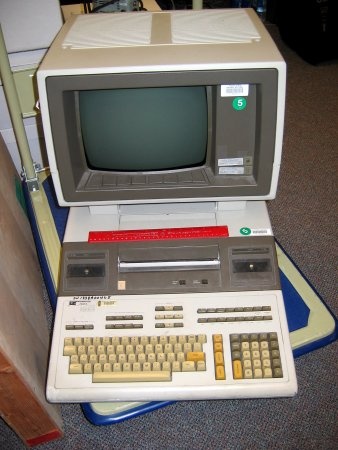...
| Div | ||||||||||
|---|---|---|---|---|---|---|---|---|---|---|
| ||||||||||
|
The graphics screen was particularly important for search programs that relied on user-input chemical structural diagrams to search large collections of compounds held by the National Cancer Institute or the Chemical Abstracts Service database of compounds.
While the stand-alone computer could be used to perform intricate mathematical operations, statistical calculations, and other heavy calculation-dependent applications, it did not have any of the application programs, such as a word processor or spreadsheet manager, that now are basic in computers. While workstations in general have been replaced by true personal computers, many of the top-selling HP 9845-B units still exist and are still operational, attesting to the ruggedness of the computer design.
Dr. Louis Sokoloff, Laboratory of Cerebral Metabolism, National Institute of Mental Health, used this HP 9845-B in his work on the deoxyglucose method—a method for measuring local glucose metabolism in the brain, used as a measure of brain activity, which has been used as the basis for PET scans. For this contribution to science, he won the 1981 Lasker Award. He also wrote user-friendly programs for the HP-9845 to statistically analyze his data. [06.0006.001]
...
Dolch Portable Add-In Computer P.A.C. 386 Model, c. 1989
| Div | ||||||||||
|---|---|---|---|---|---|---|---|---|---|---|
| ||||||||||
| Div | ||||||||||
| ||||||||||
|
| Div | ||||||||||
|---|---|---|---|---|---|---|---|---|---|---|
| ||||||||||
|




